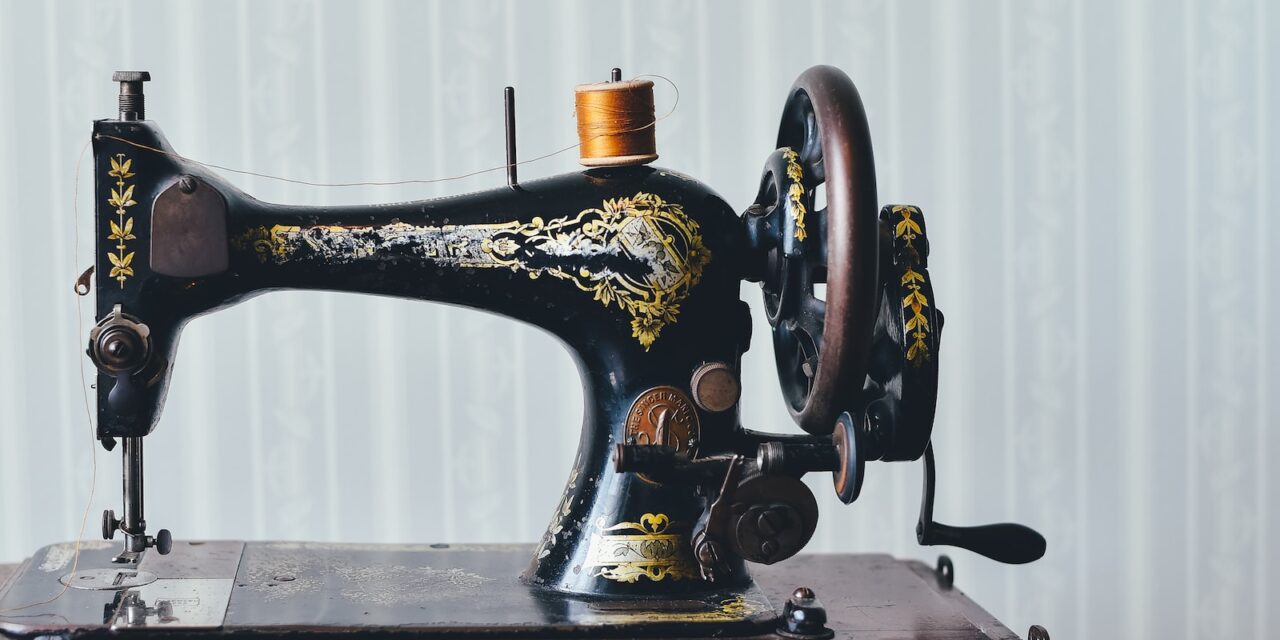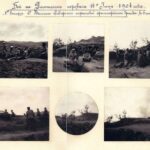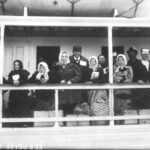Weaving a Tapestry of Heritage: Tracing Your Family’s Textile Roots
In the intricate fabric of our family history, textile traditions and heritage are woven together, binding generations across time and space. Among these threads, textiles hold a special place, serving as both a repository of familial culture and a valuable tool in genealogy research. In this section, we embark on a journey to unravel the significance of textiles in preserving and connecting with our ancestry.
The Silent Storytellers
Imagine holding in your hands a delicate handwoven shawl passed down through the generations, each thread a silent storyteller of the past. Textiles, from heirloom quilts to embroidered linens, have long been cherished family treasures, preserving not just warmth and comfort but also the customs, beliefs, and artistic expressions of our forebears.
For centuries, families have imbued their fabrics with cultural symbols, regional motifs, and even secret messages, creating a tangible connection to their history. These textiles were witness to everyday life, bearing the marks of weddings, births, and milestones, making them invaluable in piecing together the narrative of our familial past.
A Fabric of Traditions
Textiles serve as time capsules, reflecting the values and practices of the eras in which they were created. The patterns, colors, and materials used in ancestral garments, for instance, can shed light on historical events, socioeconomic status, and even migration patterns. By studying these textiles, we can gain insights into our ancestors’ worldviews and daily lives.
Each culture and region has its own rich textile tradition, from the intricate Navajo rugs of the American Southwest to the vibrant Kente cloth of West Africa. Exploring these traditions is akin to deciphering a cultural code, helping us understand the roots of our heritage and the unique contributions our ancestors made to the world of textiles.
The Genealogy Connection
Beyond their aesthetic and cultural value, textiles play a vital role in genealogy research. When piecing together our family trees, we often focus on names, dates, and places. Yet, textiles offer a unique perspective, helping us delve into the emotions and stories of our ancestors. Letters and diaries provide words, but textiles provide texture to those words.
Textile artifacts, from baptismal gowns to military uniforms, can help us corroborate information, verify relationships, and even solve mysteries within our family histories. For example, an embroidered monogram on a pillowcase might reveal the initials of a long-lost relative, providing a missing link in our genealogical puzzle.
Connecting with Your Heritage
Understanding the textile traditions of your ancestors is not only a scholarly pursuit but also a deeply personal one. As you explore the world of textiles in your family’s history, you forge a tangible link to your roots. This connection can be a source of pride, identity, and a bridge between generations.
Incorporate the study of textiles into your genealogical journey. Explore attics and closets, ask older family members about cherished heirlooms, and, if possible, embark on field trips to places of ancestral significance. Learn about the techniques and materials used by your ancestors, and perhaps even try your hand at creating textile art in their honor.
In the end, tracing your family’s textile roots is not just about unraveling threads from the past but weaving them into the fabric of your own identity. These threads may be fragile, but they are resilient enough to connect you with the rich tapestry of your heritage, ensuring that the stories and traditions of your ancestors endure for generations to come.
Fabricating Stories: Unraveling the Significance of Textile Artifacts
In the attic, tucked away in an old cedar chest, or displayed proudly on the walls of our homes, textile artifacts hold within their fibers the stories of our ancestors. These cherished items, like quilts, clothing, and tapestries, are more than just pieces of fabric; they are gateways to the past, offering a glimpse into the lives, values, and history of our forebears. Join us as we explore the rich genealogical significance of these remarkable textile treasures.
-
Quilts: Stitched Narratives of Family Ties
Quilts, with their meticulously hand-sewn patterns and vibrant fabrics, are often treasured family heirlooms. These textile masterpieces not only provided warmth and comfort but also served as a canvas for familial artistry. Quilting bees and gatherings were not only social events but also opportunities to bond and tell stories.
Each quilt square can represent a different family member or significant life event. The choice of colors, patterns, and fabrics can reflect cultural backgrounds, regional influences, and even the social values of the time. By studying the quilts passed down through generations, we can trace familial connections, migration patterns, and the evolving tastes of our ancestors.
-
Clothing: Threads of Identity and Tradition
The clothing worn by our ancestors is a tangible link to their daily lives. Handmade garments, like dresses, suits, and traditional clothing, carry not only the skill of the seamstress or tailor but also the cultural and societal norms of the era. Clothing was often handed down, repaired, and repurposed, further embedding it with significance.
Examining clothing can reveal information about a person’s age, occupation, social status, and even personal preferences. A military uniform, for instance, can signify service in a specific conflict, while a wedding dress may highlight the importance of family and tradition. These garments tell stories of love, loss, resilience, and the passage of time.
-
Tapestries: Woven Chronicles of History
Tapestries, often found adorning the walls of historic homes and castles, are more than mere decorations. They are intricate works of art that depict historical events, legends, and family crests. These textile treasures serve as visual records of the past, preserving the stories and values held dear by our ancestors.
Tapestries can illustrate the family’s historical achievements, connections to royalty or noble houses, or even provide clues to geographical origins. They were not only symbols of wealth and status but also served as educational tools, as the scenes depicted often conveyed moral lessons and historical events.
Connecting the Threads of Our Ancestry
The genealogical significance of these textile artifacts lies not just in their aesthetic beauty but in the stories they encapsulate. When we examine a quilt, a piece of clothing, or a tapestry, we are not merely observing fabric; we are touching the experiences, emotions, and aspirations of those who came before us.
As genealogists and family historians, it is our privilege to unravel the significance of these textile artifacts, preserving their stories for future generations. They serve as tangible reminders of our family’s journey, struggles, triumphs, and values. By carefully studying and documenting these treasures, we ensure that the threads of our ancestry are not lost to time but continue to weave the tapestry of our shared history.
Threads of Identity: Exploring Regional Textile Traditions
In the intricate tapestry of global culture, regional textile traditions stand as vibrant threads, each representing a unique heritage, history, and identity. From the intricate patterns of Persian carpets to the colorful embroidery of Mexican huipils, these textile customs have left an indelible mark on the world. Let’s embark on a journey through time and space to explore some well-known examples of regional textile traditions that may have woven their way into your family’s ancestry.
-
Persian Carpets: Woven Stories of Persia
The art of carpet weaving in Persia, modern-day Iran, dates back over 2,500 years. Persian carpets are renowned for their intricate designs, rich colors, and fine craftsmanship. Each region within Persia has its distinctive style, reflecting the culture and environment of its people.
These carpets are not mere floor coverings; they are woven stories of Persian history, showcasing motifs that often include intricate floral patterns, animals, and geometric shapes. Persian carpets serve as cultural markers, with designs that may incorporate regional symbols and traditions. If your family has roots in Iran or neighboring regions, exploring the history of Persian carpet weaving may reveal a connection to this rich textile heritage.
-
Japanese Kimono: Elegance and Tradition
The Japanese kimono is a symbol of elegance, tradition, and cultural identity. These beautifully crafted garments have been worn for centuries, and each element of a kimono carries its unique significance. From the choice of fabric to the intricate hand-painted motifs, every aspect of a kimono tells a story.
Regional variations in kimono styles and motifs reflect Japan’s diverse geography and history. For instance, the vibrant and ornate patterns of the Kyoto kimono contrast with the more understated elegance of kimonos from the Edo period. Exploring the kimono tradition can provide valuable insights into your Japanese ancestry and the cultural heritage of your family.
-
Mexican Huipils: Threads of Indigenous Heritage
The huipil is a traditional blouse worn by indigenous women in Mexico and Central America. These garments are often handwoven and intricately embroidered with colorful designs, which can vary significantly from region to region. Huipils serve as both clothing and cultural symbols, representing the wearer’s indigenous heritage and community.
Each embroidered motif on a huipil can hold special meaning, from depictions of nature to ancestral stories. If your family has roots in Mexico or Central America, exploring the distinct huipil traditions of different indigenous communities may offer valuable insights into your family’s regional and cultural identity.
-
Scottish Tartans: Clans and Heritage
Scotland’s tartan patterns are not just textiles; they are emblems of clan identity and national pride. These distinctive woven patterns, characterized by their colorful and intricate designs, are associated with specific Scottish clans, regions, and historical events.
If you have Scottish ancestry, discovering your family’s tartan can be a fascinating journey. Each tartan tells a story, and by identifying your clan’s pattern, you can connect with the heritage and history of your Scottish forebears.
Connecting with Your Regional Textile Heritage
Exploring these diverse regional textile traditions is like embarking on a voyage through time and culture. By learning about the unique practices, symbols, and histories associated with these textiles, you can uncover hidden threads of your own family’s heritage. These traditions are not only beautiful expressions of human creativity but also windows into the rich tapestry of our shared global history.
Passing Down the Craft: Learning About Ancestral Textile Skills
In the gentle rhythm of a loom’s shuttle, the intricate dance of a needle and thread, and the alchemical transformation of dyes and fibers, ancestral textile skills are handed down through generations like precious family heirlooms. These time-honored crafts, such as weaving, embroidery, and dyeing, are more than just practical skills; they are a living connection to our past. In this section, we celebrate the art of passing down these cherished textile traditions within families and the profound impact they have on strengthening familial bonds.
-
Weaving: Threads of Connection
Weaving, one of the world’s oldest textile crafts, is a skill that has been woven into the very fabric of human history. Passed from parent to child, master to apprentice, the art of weaving creates a tangible link between generations. From Navajo rugs in the American Southwest to intricate silk brocades in China, weaving traditions have flourished worldwide.
Within families, the passing down of weaving techniques is a deeply symbolic act. It’s not just about teaching the physical motions but also imparting the stories, rituals, and cultural significance behind each woven pattern. Learning to weave from a family member creates a bond that transcends generations, connecting us to our ancestors who once wove the same patterns and shared the same knowledge.
-
Embroidery: Stitching Stories in Threads
Embroidery, with its delicate needlework and intricate designs, is a form of artistic expression and storytelling. This textile craft allows family members to imbue their creations with personal narratives, cultural motifs, and family symbols. Across the world, different regions have their own unique embroidery traditions.
Passing down the skill of embroidery carries forward a family’s history and values. Grandmothers teach their granddaughters the same stitches their own grandmothers taught them. With each stitch, the legacy of creativity, patience, and love is sewn into the fabric. Embroidered pieces become family treasures, preserving not only the artistry but also the memories and emotions of the embroiderer.
-
Dyeing: Colorful Traditions of the Past
The art of dyeing textiles is a craft rooted in tradition and cultural significance. Whether it’s the vibrant indigo-dyed fabrics of Japan or the richly colored textiles of India, dyeing techniques have been cherished and shared across generations.
Learning the secrets of dyeing from one’s elders is a journey into the past. It involves understanding the natural sources of dyes, the intricacies of color blending, and the rituals associated with dyeing ceremonies. Family members who pass down these techniques impart not only practical knowledge but also an appreciation for the harmony between nature and artistry.
Strengthening Familial Bonds Through Textile Skills
The transmission of ancestral textile skills is a testament to the enduring power of family ties. In teaching these crafts, older generations pass on not only skills but also a sense of cultural heritage, identity, and shared values. For the recipients, learning these skills fosters a deep connection to their roots and a profound sense of belonging.
In the act of creating textiles together, families form memories and traditions of their own. Gathering around a loom, embroidery hoop, or dyeing pot provides opportunities for storytelling, laughter, and bonding. It’s a chance to bridge generational gaps, foster creativity, and strengthen the ties that bind us as a family.
As we continue to pass down these ancestral textile skills, we not only preserve the crafts of our ancestors but also weave the threads of love, tradition, and knowledge that create a rich and enduring tapestry of familial connections. These skills are a gift from the past that enriches our present and leaves a legacy for the future.
Textiles and Time Travel: Reconstructing Ancestral Garments
In the realm of family history and genealogy, there exists a fascinating avenue for connection that transcends the boundaries of time: the reconstruction of ancestral garments. It’s a journey that takes us back in time, offering a tangible link to our forebears and their way of life. This practice, using historical patterns and techniques, allows us to step into the past and walk in the shoes, or rather, the clothing, of our ancestors.
The Threads of the Past
Imagine holding in your hands a piece of fabric that once adorned your great-grandmother’s dress or your great-great-grandfather’s waistcoat. These fragments of the past are like windows into the world they inhabited. They carry not only the elegance and craftsmanship of bygone eras but also the stories and memories of those who wore them.
Reconstruction as a Journey Through Time
Reconstructing ancestral garments is not merely about sewing pieces of fabric together. It is a form of time travel, a journey back to the moments when those garments were worn with pride and purpose. By studying historical patterns and techniques, we unlock the secrets of our ancestors’ clothing, from the intricate corsets of the Victorian era to the simple yet elegant attire of colonial America.
A Tangible Connection to Ancestry
As we painstakingly recreate these garments, we develop an intimate understanding of the challenges our ancestors faced, the skills they possessed, and the fashions they embraced. Each stitch, pleat, and button becomes a bridge between the past and the present, allowing us to walk in the footsteps of our forebears.
Preserving Heritage and Tradition
Reconstructing ancestral garments is more than a creative endeavor; it’s a means of preserving heritage and tradition. It ensures that the knowledge of these textile skills is not lost to time. It also instills a deep appreciation for the artistry and craftsmanship of the past, as well as a profound sense of respect for the ingenuity of our ancestors.
A Living Connection to History
As you don the recreated garments of your ancestors, you become a living link in the chain of history. You can attend historical reenactments, family gatherings, or even simply wear these garments in everyday life, embodying the spirit and style of your predecessors.
In the world of genealogy and family history, the act of reconstructing ancestral garments is a remarkable way to breathe life into the names and dates on our family trees. It transforms our ancestors from distant figures into living, breathing individuals whose legacy continues to shape our lives. It’s a journey that not only connects us to the past but also enriches our understanding of the present and leaves a tangible legacy for future generations. So, pick up the needle and thread, and let the fabric of history envelop you as you embark on this thrilling adventure through time.
Image Source:
- Photo by Annie Spratt: instant images





